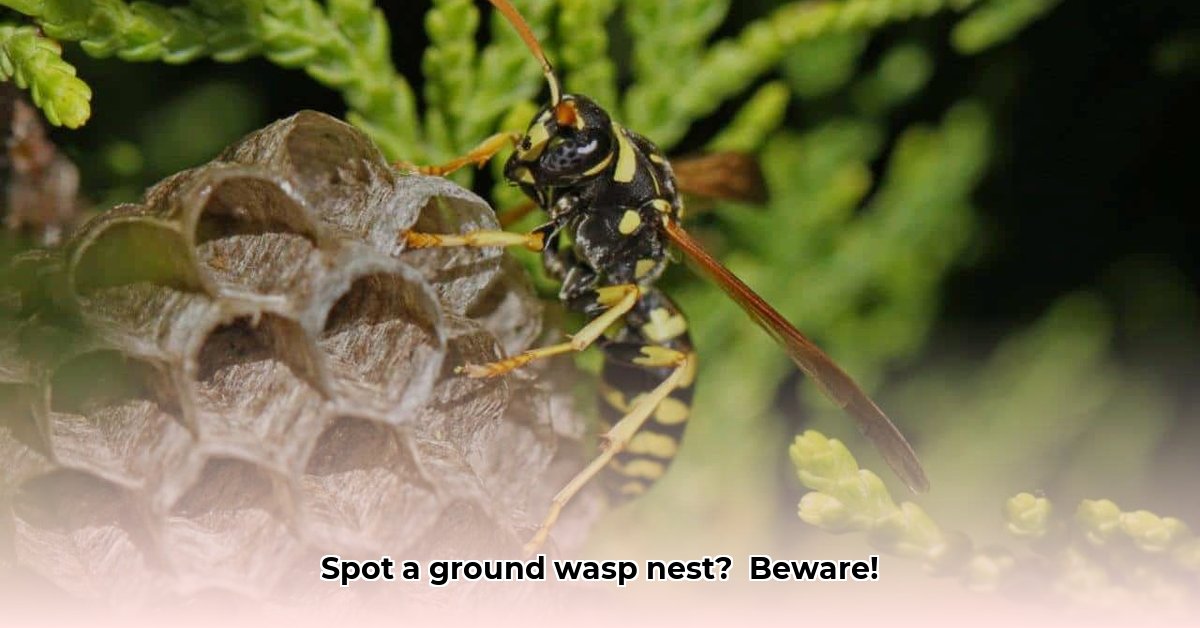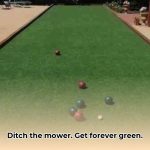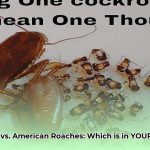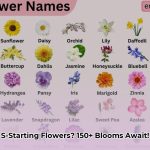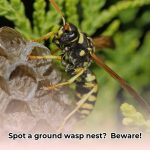This guide helps you safely and accurately identify ground wasp nests, covering key characteristics, species, and safety precautions.
Spotting a Ground Wasp Nest: Clues and Cautions
Finding a ground wasp nest is a bit like detective work. Here’s what to look for:
Hole/Mound
Look for a small hole, ranging from pencil-eraser to dime-sized (or sometimes larger). Some species build small mounds of excavated soil around the entrance, resembling miniature volcanoes, while others leave just a simple hole. The surrounding soil may appear darker or looser.
Location
Ground wasps prefer sunny, undisturbed locations with loose or sandy soil. Common nesting sites include:
- Flowerbeds
- Lawn edges
- Near house foundations
- Underneath shrubs
Wasp Activity
Observe (from a safe distance!) for wasps flying low to the ground and entering/exiting the hole. Consistent traffic strongly suggests a nest.
Common Ground Wasps: Know Your Neighbors
Identifying the species is crucial for understanding potential risks.
Yellow Jacket (Vespula spp.)
(Image of Yellow Jacket and Nest)
- Appearance: Bright yellow and black stripes.
- Nest: Often marked by a small mound of excavated dirt. Can house hundreds or thousands of wasps. Sometimes nests are located in pre-existing cavities like rodent burrows or wall voids.
- Aggressiveness: High. Very defensive of their nests.
Cicada Killer (Sphecius speciosus)
(Image of Cicada Killer and Nest)
- Appearance: Large (1-2 inches long) with black bodies, yellow markings, and reddish legs.
- Nest: Burrows in sandy soil, often resembling miniature volcanoes.
- Aggressiveness: Generally low unless directly provoked.
Ammophila urnaria (Elegant Sand Wasp)
(Image of Elegant Sand Wasp and Nest)
- Appearance: Smaller and more slender than cicada killers, predominantly black with variable red markings.
- Nest: Burrows in sparse vegetation, often in gravelly, sandy areas like roadsides or riverbanks.
- Aggressiveness: Low, primarily focused on hunting caterpillars.
Golden Digger Wasp (Sphex funerarius)
(Image of Golden Digger Wasp and Nest)
- Appearance: Relatively large (up to 1 inch), black with a striking orange band.
- Nest: Deep burrows, often deeper than cicada killer burrows.
- Aggressiveness: Low, mainly preys on grasshoppers and locusts.
Comparison Table
| Feature | Yellow Jacket | Cicada Killer | Ammophila urnaria | Golden Digger Wasp |
|---|---|---|---|---|
| Size | Small to medium | Large | Small, slender | Large |
| Color | Yellow/Black | Black/Yellow/Red | Black/Red | Black/Orange |
| Nest | Small mound, single entrance | Small mound, single entrance | Single burrow | Deep burrow |
| Aggressiveness | High | Low | Low | Low |
| Social Behavior | Colonial | Solitary | Solitary | Solitary |
Is it Really a Wasp Nest? Ruling Out Other Possibilities
Mistaking other burrows or mounds for wasp nests is easy.
(Comparative Images of Wasp Nest, Ant Hill, Ground Bee Nest, and Rodent Burrow)
- Ant Hills: Typically smaller with multiple entrances and finer-grained soil.
- Ground Bee Nests: Less defined entrances with scattered pollen and bee activity. The soil around the entrance is often loose and fluffy.
- Rodent Burrows: Larger, may show signs of gnawing. Look for droppings or tracks nearby.
- Other Insect Burrows: Vary considerably, careful observation of the insects and their behavior is necessary for proper identification.
Safety First: Observing Without Disturbing
Suspect a wasp nest? Do not disturb it.
- Observe from several feet away.
- Avoid vibrations or loud noises.
- Never attempt to seal or block the entrance – this can trap wasps inside, escalating the risk of stings.
Peaceful Coexistence: If the nest is in a low-traffic area and the wasps aren’t bothering anyone, particularly with less aggressive species, coexisting is possible.
When to Call a Professional: If the nest is in a high-traffic location or houses aggressive wasps like yellow jackets, contact a pest control service for safe removal.
FAQs: Addressing Your Concerns
What if I get stung?
Most stings cause localized pain, swelling, and redness. Apply a cold compress and use over-the-counter pain relievers. Seek immediate medical attention for allergic reactions (difficulty breathing, hives, dizziness).
How can I prevent ground wasps?
Maintain a tidy lawn, fill potential nesting sites (holes, cracks), and avoid leaving sugary drinks or food outdoors.
Ongoing Research and Regional Variations
While this guide provides a solid foundation, remember that research on wasp behavior is ongoing. Some experts suggest climate change may influence nesting habits; the specific wasps present and their behavior can vary regionally. Further research is needed for a comprehensive understanding, and the information presented here is likely to evolve with new discoveries. Always consult local resources and experts for the most accurate, up-to-date information for your specific area.
Conclusion
Accurate identification is crucial for safety and appropriate action. By understanding ground wasp behavior, you can coexist peacefully or make informed decisions about professional removal.
- Grass Forever in Livermore: Your Guide to Artificial Turf - April 22, 2025
- German Roaches vs. American Roaches: Key Differences and Control - April 22, 2025
- 150+ Flowers That Start With S: A Comprehensive Guide - April 22, 2025
